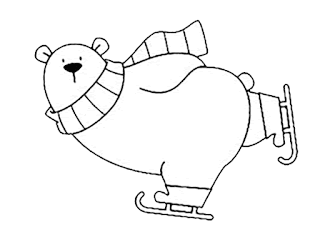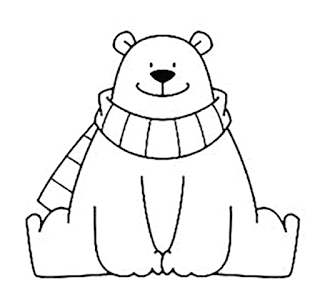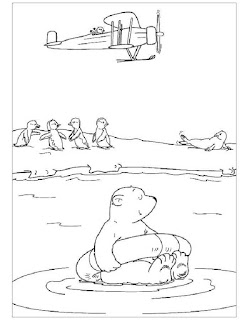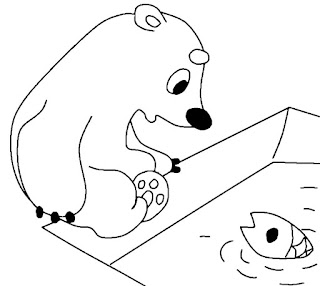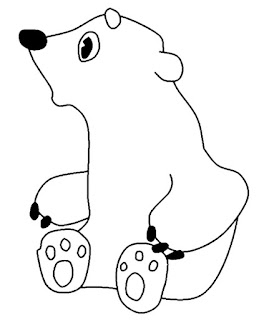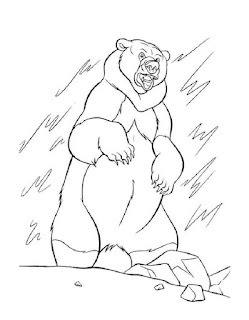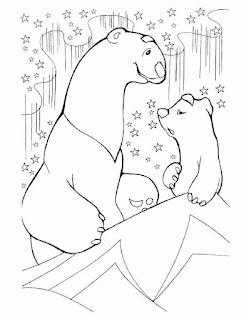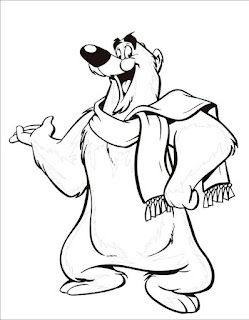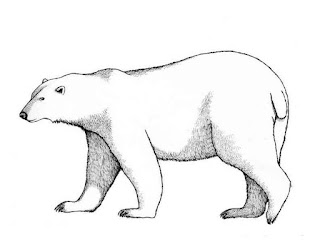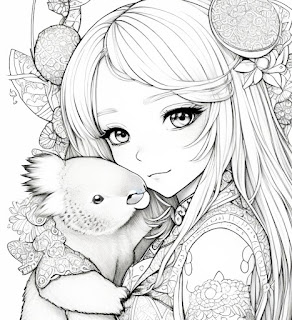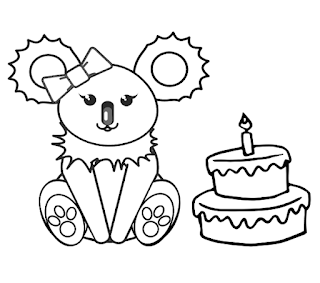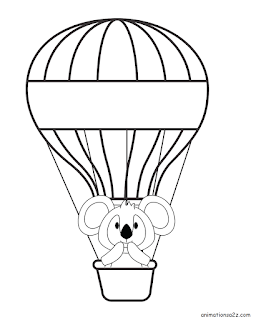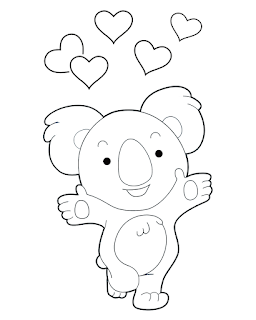Free printable coloring pages of polar bears, white bears that live in the north pole of the earth.
Printable coloring pages for kids and adults, worksheets for kindergarten kids, preschoolers and low grades on many different topics, games and exercises on many subjects, mandalas, hobbies, gifts, greeting cards, animations and glitters, health and good life tips, beautiful and moving stories and sentences.
Polar bears coloring pages
Coloring pages of Koala bears
Coloring pages of koalas, the animals that are neither bears nor monkeys, but pocket mammals that live in Australia and belong to the family of kangaroos. Choose the koala coloring page you want to paint, print and paint for your enjoyment.
International Raccoon Appreciation Day - October 1st
The International Raccoon Appreciation Day is a holiday in honor of the cute raccoons, which are considered by many to be harmful or annoying, but are actually an important part of our ecosystem.
The raccoon lives mainly in North America and Europe. In the US many of them can be found in urban areas.
Raccoon Appreciation Day is designed to teach us about the benefits that raccoons bring to the ecosystem and how they are beneficial to the environment: they help maintain cleanliness because they eat carrion, they prevent the culture of harmful animals by eating them, they scatter seeds of nuts and fruits as they eat and thus spread them .
The idea to create a special day in honor of the raccoons was proposed by a girl from California in 2002. She saw that although many refer to raccoons as a nuisance, there are also those who love them and want to keep them. In the United States even raccoons are allowed to be kept as pets and many people adopt them. She decided to create this day to show the positive sides that raccoons have and the role they play in the ecosystem. At first the day was celebrated only in the United States and in the following years the idea was adopted by more countries in the world and it became International Raccoon Evaluation Day.
Raccoons live in a diverse climate, and in rural, urban and suburban areas. Despite the loss of their habitats in the wild, their population continued to grow in North America.
Six species of raccoons live in North and South America. The Common Raccoon is the most common species of raccoon in North America. Other raccoons live in the more southern regions such as the Crab-eating raccoon that lives in Central and South America, and the pygmy raccoon (Cozumel raccoon) that lives only on the island of Cozumel west of the coast of the Yucatan Peninsula in Mexico. The pygmy raccoon is in serious danger of extinction in the wild because of all sorts of human developments that have increased tourism and thus reduced its habitats and also because of illegal hunting.
Raccoons are omnivores that eat both animals and plants. Among their foods are turtles, snails, worms, rabbits, waterfowl, frogs, nesting birds, eggs, mollusks, compost, grains, seeds, nuts, fruits and vegetables. On the one hand they help get rid of garbage and on the other hand they also steal pet food in residential areas.
Raccoons have many receptors on their hands that allow them to identify their food through the sense of touch without seeing it and also to find food in streams. When they wash their hands before eating, the water stimulates the nerve endings in them and they feel better about their food. This is why the raccoon is also called a "washing bear". Even when the raccoons are eating, they are constantly busy holding and feeling their food.
The black "mask" around their eyes is known to help them see better because it absorbs light and reduces glare. Raccoons reach a length of 40 to 70 cm and a weight of 4 to 26 kg.
 |
| Raccoon as a pet (source) |
Raccoons tend to live in burrows in trees or caves, but also in barns and abandoned buildings.
Raccoons are nocturnal creatures that sleep during the day, and in the winter months they sleep much longer, although they do not go into hibernation like bears.
The birth period of raccoons is in early summer. Their launch contains one to seven raccoons for pregnancy. They live up to 7-16 weeks with their mothers. At the age of 8 months to a year they become completely independent.
How to celebrate International Raccoon Appreciation Day?
On International Raccoon Day, you will learn about raccoons. You can go visit zoos to see them or even adopt a raccoon as a pet. You can watch movies starring raccoons like Over The Hedge of Dreamworkds or the Japanese movie Pom Poko. You can watch funny movies with raccoons on Youtube. You can draw or color raccoons. You can find a lot of things to do with raccoons this day but the most important thing is that you will appreciate these lovely animals!
World Wildlife Conservation Day- 4 December
The world is full of fascinating and beautiful animals; Elephants, monkeys, bears, lions, deer, giraffes, leopards and more, a magnificent animals living in their natural environment and often we see them in nature films or Safari.
The sad truth is that many of these animals in danger of extinction. Many of the most favorite animals are slaughtered daily by hunters acting illegally, who will stop at nothing to get what they want. What they want is to spare animals are worth a lot of money for the purpose of selling them for manufactured products no one in their right mind really understand why we have them.
There are many synthetic substitutes for things like ivory and fur do not require brutal massacre of animals to get them, not to mention the alternatives to synthetics are higher quality. Really there is not a more delicious then shark soup so you need to destroy live sharks then throwing them back into the sea to die? There is no justification for the amount of animals that die each year. And yet it happens. In 2011 alone, for example elephant hunters were confiscated over 23 tons of ivory, which means at least 2,500 dead elephants. A United Nations report from 2010 suggests that the gorillas may disappear altogether from large parts of the Congo Basin in the mid-2020.
style="display:block"
data-ad-format="fluid"
data-ad-layout-key="-g7+t-3o-an+x9"
data-ad-client="ca-pub-8152220688286833"
data-ad-slot="7257876051">
How to mark the Wildlife Conservation World Day?
Raise awareness and contribute to the preservation and protection of endangered species such as elephants, rhinos and tigers on the website of daily global wildlife conservation. This global event gives us all the opportunity to learn more about wildlife conservation and be part of the solution to crime against wildlife. Spread the message about the importance of protecting endangered species on the planet and the devastating impact of poaching on our environment. Learn how to make consumers responsible to stop the illegal trade of wildlife.
Link to the website of the WWF-World Wildlife Fund in which you can read about the animals that are at risk and what can and should be done to stop it.


